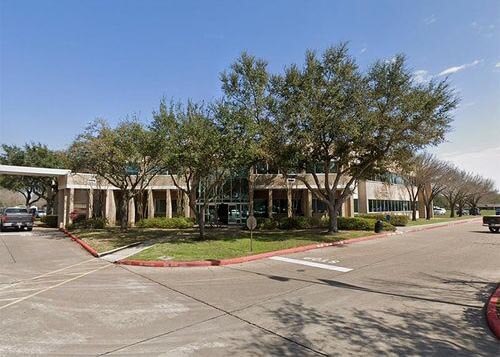
Pterygium is an abnormal superficial growth of the conjunctiva that extends from the corner of the eye near the center of the eye. The pterygium can vary in appearance. It can range from a small hard to see tissue mass to a large red and very noticeable growth. Because pterygium varies in appearance it may be yellow, gray, white, pink, red, or even colorless. It may even have blood vessels. If you think you might be experiencing the growth of such tissue please be sure to contact the Texas Eye Insistite for an immediate exam. If you are seeking a surgeon for removal of pterygium call us. Most patients with pterygium contact ophthalmologists either due to concern regarding the appearance of the lesion, or because the lesion is irritating the eye or it is adversely affecting vision.
If the pterygium grows over the cornea (outer surface), your eye may be in serious harm. Surgical removal will be required. The Pterygium surgery can be repetitive where a patient may require multiple surgeries to completely remove the growth, restoring vision.
It is possible that a patient with Pterygium has no symptoms, but this rare. Symptoms are usually first noticed on the conjunctiva, and then is noted to gradually grow onto the cornea of the eye. Most patients have a variety of symptoms including redness, swelling, itching, irritation, and maybe even blurred vision depending on the severity. When this growth extends onto the cornea it is called a pterygium. Left alone, some pterygia will eventually grow to obscure the optical center of the cornea, thereby obstructing vision.
There is nothing that has been clearly shown to prevent a pterygium. Because exposure to UV radiation is a major cause of this disease protecting your eyes from exposure to the sun is critical. When doing outdoor activities it is advised to wear UV Coated sunglasses and maybe wear a hat. Of course these types of precautions are more important if you live in tropical areas or are frequently in the sun. UV damage can be severe and we advise against unnecessary exposure to UV radiation.
No-stitch surgery is possible by use of modern tissue adhesive. Often composed of clotting proteins from human blood the tissue adhesive allows the surgeon to secure an autograft in a short amount of time. Once the abnormal tissue is removed a thin graft of normal tissue is used to replace the damaged area.
Pterygium can be quite common in Texas. If you think that you may be in the process of developing this type of eye growth please contact us immediately so that we can properly diagnose and treat the problem before it worsens. Our Houston pterygium eye doctors are available for an appointment or consultation regarding your specific visual situation with pterygium.
Texas Eye Institute is proud to provide five convenient locations for your eye care needs. Visit one of our convenient locations in Angleton, Sugarland, Southwest Houston, Katy, or Southeast Houston to see why the Texas Eye Institute is the best choice to care for your vision. Need LASIK in Houston? What about a comprehensive eye exam in Sugarland? See our locations page to find our practice nearest you!









